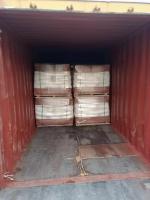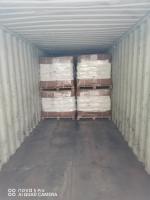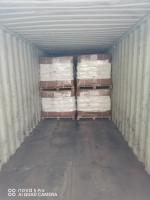Our Products
Polyacrylamide / cationic polyacrylamide zetag 9219 zetag 9249 FS can be replaced by Chinafloc C

cationic polyacrylamide zetag 9219 zetag 9249 FS can be replaced by Chinafloc C
zetag 9219 and zetag 9249 FS are two models with very high charge and linear and medium-structure.mainly used for water treatment and sludge dewatering.
Cationic polyacrylamide (CPAM) is a water-soluble polymer with positively charged functional groups that play a critical role in a variety of industrial and environmental applications. The versatility of CPAM stems from its ability to act as a flocculant, coagulant, thickener, and dewatering agent. This 1000-word analysis explores the primary applications of cationic polyacrylamide across sectors such as wastewater treatment, papermaking, sludge dewatering, oil extraction, and more.
1. Wastewater Treatment
Wastewater treatment is one of the largest applications of cationic polyacrylamide, particularly in industrial settings where the effluent contains large amounts of organic and suspended materials. CPAM's positive charge makes it ideal for aggregating negatively charged particles like organic waste, minerals, and sludge.
Mechanism in Wastewater Treatment
Cationic polyacrylamide works by neutralizing the negative surface charges of suspended solids and colloidal particles in wastewater. The polymer’s long chains bridge between these particles, promoting flocculation and forming larger aggregates or flocs. These flocs can be easily separated from the water via sedimentation, flotation, or filtration processes, resulting in cleaner effluent.
Applications in Industry
- Municipal Wastewater: In municipal wastewater treatment plants, CPAM is used to improve the settling and dewatering of sludge. It helps remove suspended solids, organic matter, and nutrients, ensuring compliance with environmental discharge regulations.
- Industrial Wastewater: Industries such as food processing, chemical production, and textile manufacturing generate wastewater rich in organic contaminants and other pollutants. CPAM is employed to enhance solid-liquid separation and improve the clarity of treated water.
2. Sludge Dewatering
Sludge dewatering is another major application of cationic polyacrylamide, particularly in wastewater treatment facilities where large amounts of sludge are generated. Efficient dewatering reduces the volume of sludge, lowering disposal costs and facilitating easier handling.
How CPAM Enhances Dewatering
Cationic polyacrylamide is added to sludge to promote the coagulation of fine particles, creating larger flocs that can be easily dewatered. CPAM binds to the negatively charged components in sludge, such as clay particles, organic material, and biological cells, helping to remove excess water from the mixture. The result is a denser, more compact sludge that is easier to transport and dispose of.
Industries That Benefit
- Municipal Sludge Dewatering: CPAM is used extensively in municipal sewage treatment plants to reduce sludge volumes, improving the efficiency of sludge handling and reducing operational costs.
- Industrial Sludge Management: In industries such as mining, food processing, and petrochemicals, CPAM is crucial for dewatering sludge before final disposal or further treatment.
3. Papermaking
In the paper and pulp industry, cationic polyacrylamide is employed as a retention agent, drainage aid, and flocculant. It plays a vital role in improving the efficiency of papermaking processes, enhancing paper quality, and reducing water consumption.
CPAM as a Retention Agent
In papermaking, the retention of fine fibers, fillers, and additives is essential for ensuring paper quality and reducing material loss. CPAM binds to negatively charged fibers and fillers, helping them adhere to the forming paper sheet rather than being lost in the wastewater. This improves the retention of valuable materials, reducing waste and lowering production costs.
CPAM as a Drainage Aid
Cationic polyacrylamide enhances water removal during the paper-forming process by improving the drainage rate of the pulp slurry. Better drainage not only speeds up the production process but also reduces the energy required for drying the paper, leading to cost savings.
4. Oil and Gas Industry
In the oil and gas industry, CPAM finds application in enhanced oil recovery (EOR), drilling muds, and treatment of oily wastewater. Its ability to act as a flocculant and viscosifier makes it a valuable asset in various stages of oil extraction and processing.
Enhanced Oil Recovery (EOR)
Cationic polyacrylamide is used in chemical EOR techniques, such as polymer flooding, where it improves the viscosity of injected water. By increasing water viscosity, CPAM helps displace oil more efficiently from the reservoir, enhancing oil recovery rates. The polymer’s positive charge also aids in reducing water channeling and fingering, ensuring a more uniform sweep of the oil.
Treatment of Oily Wastewater
In oil production and refining, large amounts of oily wastewater are generated. CPAM is employed to treat this wastewater by flocculating the oil droplets and suspended particles, allowing for their separation from the water. This process improves the quality of the treated water and enables its reuse or safe disposal.
Drilling Mud Stabilization
Cationic polyacrylamide is used in drilling muds to stabilize the mud, control fluid loss, and prevent the collapse of wellbore walls. The polymer’s thickening and flocculating properties help maintain the stability of the drilling fluid, ensuring smoother and more efficient drilling operations.
5. Textile Industry
In the textile industry, cationic polyacrylamide is used for various purposes, including wastewater treatment, dye fixation, and fabric conditioning. Its ability to flocculate suspended solids and improve water clarity makes it indispensable in textile wastewater management.
Dye Fixation and Wastewater Treatment
Textile production involves the use of dyes and chemicals, which are released into wastewater during the dyeing process. CPAM helps fix dyes onto the fabric by neutralizing the negative charges of the dye molecules, preventing them from washing out during rinsing. Additionally, CPAM is used in the treatment of textile wastewater, where it aids in the removal of suspended solids, dyes, and other contaminants.
6. Mining and Mineral Processing
Cationic polyacrylamide is widely used in the mining industry for mineral processing, tailings treatment, and wastewater management. It is particularly useful for separating fine particles from mining slurry and enhancing the recovery of valuable minerals.
Applications in Mineral Processing
In mineral beneficiation processes, CPAM promotes the aggregation of fine particles, improving the efficiency of solid-liquid separation. This results in higher recovery rates of valuable minerals and reduces the amount of water required for processing.
Tailings Treatment
After the extraction of minerals, mining operations generate large volumes of waste material, known as tailings. CPAM is used to treat tailings by promoting the settlement of fine particles, which facilitates the recovery of water for reuse in the mining process and reduces the environmental impact of tailings disposal.
7. Agriculture
Cationic polyacrylamide is also used in agriculture to improve soil structure, reduce soil erosion, and enhance water retention. Its application is particularly valuable in areas prone to soil degradation and water scarcity.
Soil Conditioning and Erosion Control
CPAM is applied to agricultural soils to improve their stability and water-holding capacity. By flocculating soil particles, it helps prevent soil erosion caused by wind and water. This not only improves the quality of the soil but also enhances crop growth by ensuring that the soil retains sufficient moisture.
8. Environmental Applications
Beyond its industrial uses, cationic polyacrylamide has important environmental applications, particularly in the treatment of contaminated water and the management of natural resources.
Contaminated Water Treatment
In environmental remediation projects, CPAM is used to treat contaminated water, including water polluted by heavy metals, oils, and organic contaminants. Its ability to flocculate suspended solids and bind to pollutants makes it an essential tool in cleaning up contaminated water bodies.
Soil Remediation
CPAM is also employed in soil remediation projects, where it helps immobilize pollutants in contaminated soils, preventing their leaching into groundwater or being taken up by plants.





